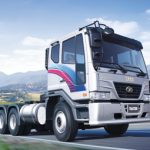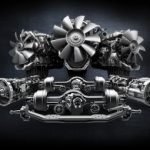Aluminium, stealing the show
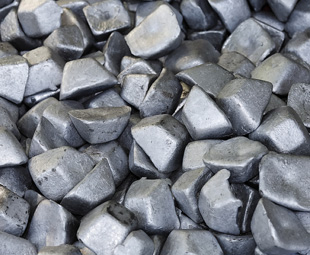
DANIELLE DU TOIT takes a look at what aluminium has done for the commercial vehicle industry – from 1950s buses to super-lightweight trailers, it’s all here.
The history of aluminium ties in closely with the history of the automobile. Whether car, truck, bus or trailer, the first rudimentary aluminium designs have slowly evolved into the high-technology innovations we see on our roads today.
Some facts
Aluminium is the third most abundant element of the earth’s crust and the most abundant of all metallic elements, so it was found relatively early – in 1821, in a clay-like substance that was later called bauxite.
It is a soft, durable and pliable metal with high corrosion resistance – but the best feature of this metal is its lightness. The Wright brothers owed their first flight in 1903 to this aspect of aluminium, which they used in the development of their engine.
Four years after the discovery of bauxite, through a painstaking chemical process, the pure chemical compound of aluminium was finally obtained, and production of the world’s first aluminium products began.
Aluminium is regarded as one of the most versatile metals because it can be used in a variety of ways – castings, extrusions, tubes, sheets and plates, foils, powders, and forgings. It also suits itself well to various surface finishes such as coating, anodising and polishing.
Aluminium and the commercial vehicle sector
Once people were able to easily separate the bauxite into aluminium and other compounds, the appearance of vehicles sporting aluminium bodies started to appear. In 1913, Ford and Audi became the first companies to produce automobiles featuring aluminium bodies. The commercial vehicle industry was close behind.
Delivery vehicles and vans with aluminium driver cabs mounted on steel chassis began to appear in the 1920s. The initial introduction of this lightweight metal produced a weight saving of about 600 kilograms – yes, around 600 kgs! That’s because vehicles had previously been manufactured with wood and steel.
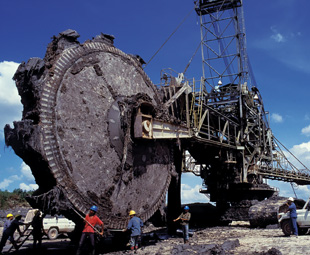 Buses with aluminium bodies began appearing at around the same time – the bodies were made from pure aluminium sheets and were generally mounted on steel chassis.
Buses with aluminium bodies began appearing at around the same time – the bodies were made from pure aluminium sheets and were generally mounted on steel chassis.
Aluminium trailers began to appear in 1933, with hardened frames made from an amalgamation of various metals – aluminium being the most prominent. Chassis-free or self-supporting tankers were also being produced in the United Kingdom (UK). They had six compartments and could transport approximately 16 200 litres of petrol.
European and American production of aluminium-based products was halted at this point since all metals were being diverted to factories manufacturing armaments. The demand for aluminium during World War II soared and eventually all consumer production was put on hold.
After the war
The 1950s saw the aluminium commercial vehicle industry expand rapidly – this was the decade of growth and invention. Aluminium flatbed trucks were the norm and rear-end tippers began to make appearances in the UK. Trailer innovation was at its peak – tankers with non-supporting aluminium tanks were being manufactured all over Europe, sporting marbled, metallic designs to make them aesthetically pleasing. The 1950s also proved to be a great decade for bus innovation, with the introduction of aluminium double-decker buses; the upper level was aluminium and the lower level and chassis were made from steel.
How does South Africa measure up?
Hulamin is one of Africa’s leading independent producers of semi-finished and fabricated aluminium products, and is situated in South Africa. It’s been in the aluminium business since 1940 and exports 75 percent of its products to North and South America, Europe, Asia and Australia, proving that its product is on a par with international standards, says Mzimtsha Maku, market manager for general engineering and growth projects at Hulamin Limited.
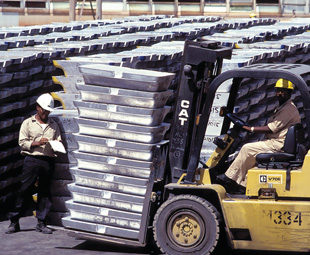 When asked about the advantages of aluminium, Mzimtsha can list many – it has a high strength-to-mass ratio, is non-toxic, impervious, thermally conductive and non-corrosive, and is highly recyclable; an important badge to have these days. He points out that it is mined here in Africa. The exact process is rather complicated, with bits and pieces coming from here and there, but Hulamin is proudly South African.
When asked about the advantages of aluminium, Mzimtsha can list many – it has a high strength-to-mass ratio, is non-toxic, impervious, thermally conductive and non-corrosive, and is highly recyclable; an important badge to have these days. He points out that it is mined here in Africa. The exact process is rather complicated, with bits and pieces coming from here and there, but Hulamin is proudly South African.
Back to the history books. Our country is always a little behind in technology and it would be rude to begin this tale without mentioning the Leyland Olympic. This is the granddaddy of all South African buses. The body frame consisted mainly of steel tubes clad in aircraft-grade aluminium. What is remarkable about this vehicle is that many were built in Port Elizabeth from 1951 onwards. The vehicles were designed and specially built for South African roads – and sadly, because of Apartheid, featured separate spaces for different races.
In the truck and trailer department, things were looking up. The 1960s and 70s were eras of technological innovation where designers sought not only to build lighter, better vehicles, but long-lasting vehicles, which was good for the environment and easy on the pocket.
The evolution of buses, trucks and trailers in this time was mainly due to advancements in joins and section welding. Aluminium’s pliability means it’s more easily deformed or shaved – engineers quickly latched on to this and began experimenting.
Most commercial vehicles have a chassis that is manufactured from steel, giving the aluminium a rigid platform on which to be mounted. Bolting and riveting has made fatiguing of welds and joins less common. Scientific stress tests and load-carrying capacity were normal for all commercial vehicles in the 1970s.
Back to the 1960s – the truck was king, and a national road structure was in place to allow safe, efficient and, most importantly, fast transportation. MAN Truck & Bus began its South African history in this decade and Volvo was releasing trucks that were unbelievably advanced. Aluminium cabs with ferocious engines that had been crash-tested? Yes, this was indeed the truck age.
But most trucks need a trailer, and South Africa has many trailer companies – including Afrit, Serco, Hendred Freuhauf, GRW and Duncanmec. Alutip, one of SA’s leading aluminium trailer builders, has been in business for seven years. “I’ve seen the benefits of using aluminium in the production of trailers,” says Alutip MD Rudolph Labuschagne.
Alutip get all its aluminium from Hulamin and says that although there are cheaper options and alloys out there, their long-lasting Hulamin-aluminium-based trailers speak, and eventually pay, for themselves.
Labuschagne says lightweight alloys, which are all the rage in trailer building circles, do prove to be excellent – in a lab. “But you can’t recreate a road environment in a laboratory, and what we’ve noticed with some of these alloys is that the vibrations produced by road driving are causing metal fatigue, something engineers hadn’t expected. With aluminium, we use thicker pieces and rarely, if ever, experience fatigue.
“Most of our vehicles that were built seven years ago are still going strong,” he adds. “I personally think an aluminium trailer will outlast any other trailer – not only are they lighter, but the applications of aluminium, plus good quality braking and suspension systems, have proven effective and have made our trailers number one.”
The future
What can we expect of aluminium going forward? The versatility of this product won’t let anyone predict – right now we’re already in an aluminium world that we hardly see. A truck pulls up next to your car; both are manufactured from aluminium. The aluminium traffic light turns green, and as you pull off, you notice that the truck-trailer is loaded with cooldrink cans. Aluminium trailer, aluminium cans. Your lunch, packed in aluminium foil, sits on the passenger seat. The stop street you drive past, aluminium. The bus, aluminium. Number plates? Aluminium. Aluminium is stealing the show and we don’t even realise it – but we sure do appreciate its benefits.
Published by
Focus on Transport
focusmagsa

